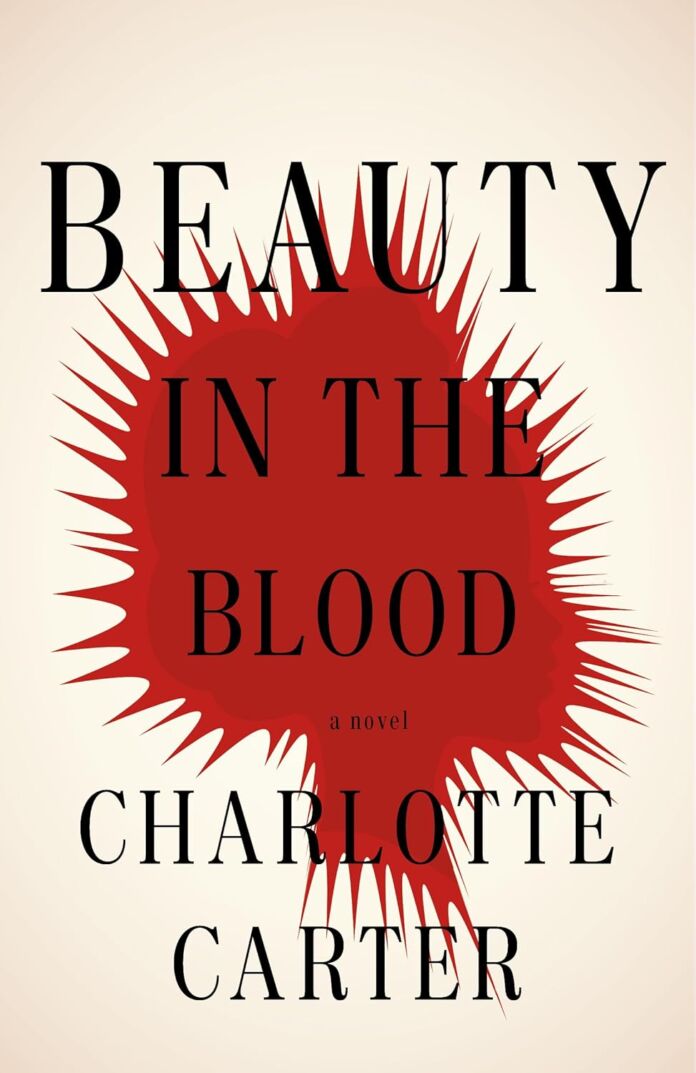Charlotte Carter’s latest novel, Beauty in the Blood, is a masterfully crafted supernatural thriller that weaves together multiple timelines and perspectives to tell a story of generational trauma, racial violence, and a centuries-old curse that refuses to die. The novel marks Carter’s triumphant return to the mystery genre after her acclaimed Nanette Hayes series, though this time with a decidedly darker, more supernatural edge.
Plot and Narrative Structure
The Modern Timeline
The story primarily follows two women whose lives become inexplicably intertwined. Sarah Toomey, a successful lawyer with ivory-colored skin, finds herself experiencing blackouts and violent urges following her mother’s death. Meanwhile, Yvonne Howard, a former prison guard turned chef, investigates the mysterious deaths of two siblings – Bitty Willetts and her brother Crawford. As the narrative unfolds, we discover these seemingly separate threads are connected by a dark supernatural force that stretches back to the Civil War era.
The Historical Timeline
Carter skillfully interweaves a haunting historical narrative set in 1865 Georgia, following a group of escaped slaves led by Preacher Jack Willetts. This subplot provides the horrifying origin of the curse that echoes through generations, culminating in the present-day events. The author’s depiction of this period is unflinching in its portrayal of the brutality of slavery while maintaining literary sophistication.
Character Development
Strength in Complexity
The novel’s greatest triumph lies in its richly drawn characters, particularly its female protagonists. Sarah Toomey is a fascinating study in duality—outwardly composed and successful, inwardly fracturing. Her descent into violence and memory loss is portrayed with psychological precision that makes the supernatural elements feel eerily plausible.
Yvonne Howard emerges as the moral center of the novel, carrying her own dark past while seeking justice for others. Her transformation from hardened prison guard to passionate chef, and ultimately to amateur detective, feels organic and earned.
Supporting Cast
The secondary characters are equally well-crafted. Jeffrey Bender, Sarah’s married lover, provides both romantic tension and tragic inevitability. Bean, Kofi’s nephew, offers youth and innocence in contrast to the darkness surrounding him. Each character serves the story while maintaining their own distinct identity and motivation.
Themes and Symbolism
Legacy of Violence
Carter explores how historical violence echoes through generations, particularly within the context of American racial history. The curse that drives the plot becomes a metaphor for the way trauma is inherited and transformed across time.
Identity and Duality
The novel grapples with questions of identity, particularly through Sarah’s character. Her light skin and professional success place her between worlds, while her increasingly fractured psyche reflects deeper questions about the nature of self.
Love and Destruction
The romantic elements of the story serve to heighten its tragedy. Whether in the historical timeline or the present day, love becomes both salvation and catalyst for destruction.
Writing Style and Technique
Carter’s prose is elegant yet muscular, capable of shifting from lyrical description to brutal violence without losing its rhythm. Her experience as a mystery writer shows in the careful parsing of information, while her venture into supernatural territory reveals new depths to her craftsmanship.
Pacing and Tension
The novel maintains a steady build of tension, with moments of explosive violence punctuating quieter scenes of character development. The parallel timelines are handled deftly, each informing and amplifying the other.
Critical Analysis
Strengths
- Masterful integration of supernatural elements with historical and contemporary narratives
- Complex, well-developed characters who defy easy categorization
- Strong sense of place, from Manhattan’s legal offices to Georgia’s swamplands
- Thoughtful exploration of racial identity and generational trauma
- Sophisticated handling of violence and its psychological impact
Areas for Improvement
- Some readers might find the supernatural elements challenging to reconcile with the more grounded aspects of the story
- The complex narrative structure occasionally requires careful attention to follow
- Certain plot threads could have been more fully resolved
- The ending might feel abrupt to some readers
Impact and Significance
Beauty in the Blood represents a significant evolution in Carter’s work, successfully blending elements of supernatural horror with her established strengths in mystery writing. The novel’s exploration of racial violence and generational trauma through a supernatural lens offers fresh perspectives on these crucial themes.
Comparison to Other Works
Fans of Octavia Butler’s Kindred or Toni Morrison’s Beloved will find familiar themes handled in a distinctive way. The novel also shares DNA with contemporary supernatural thrillers like Victor LaValle’s The Changeling, though Carter’s approach is uniquely her own.
Final Verdict
Beauty in the Blood is a powerful, unsettling novel that succeeds both as a supernatural thriller and as a meditation on America’s racial history. While not perfect, its ambition and execution make it a significant achievement in contemporary fiction.
Recommendations
This book is ideal for readers who:
- Enjoy sophisticated supernatural thrillers
- Appreciate complex narratives with multiple timelines
- Are interested in historical fiction dealing with racial themes
- Like character-driven horror that emphasizes psychological tension
- Enjoy mysteries that venture beyond conventional boundaries
The Author’s Journey
Charlotte Carter’s evolution from writing traditional mysteries to this more ambitious supernatural thriller demonstrates her growth as a writer. While fans of her Nanette Hayes series will find familiar elements in her sharp characterization and sense of place, Beauty in the Blood represents an exciting new direction in her work.
This novel confirms Carter’s place as a significant voice in contemporary fiction, one who isn’t afraid to tackle difficult themes while maintaining literary excellence and narrative momentum.





